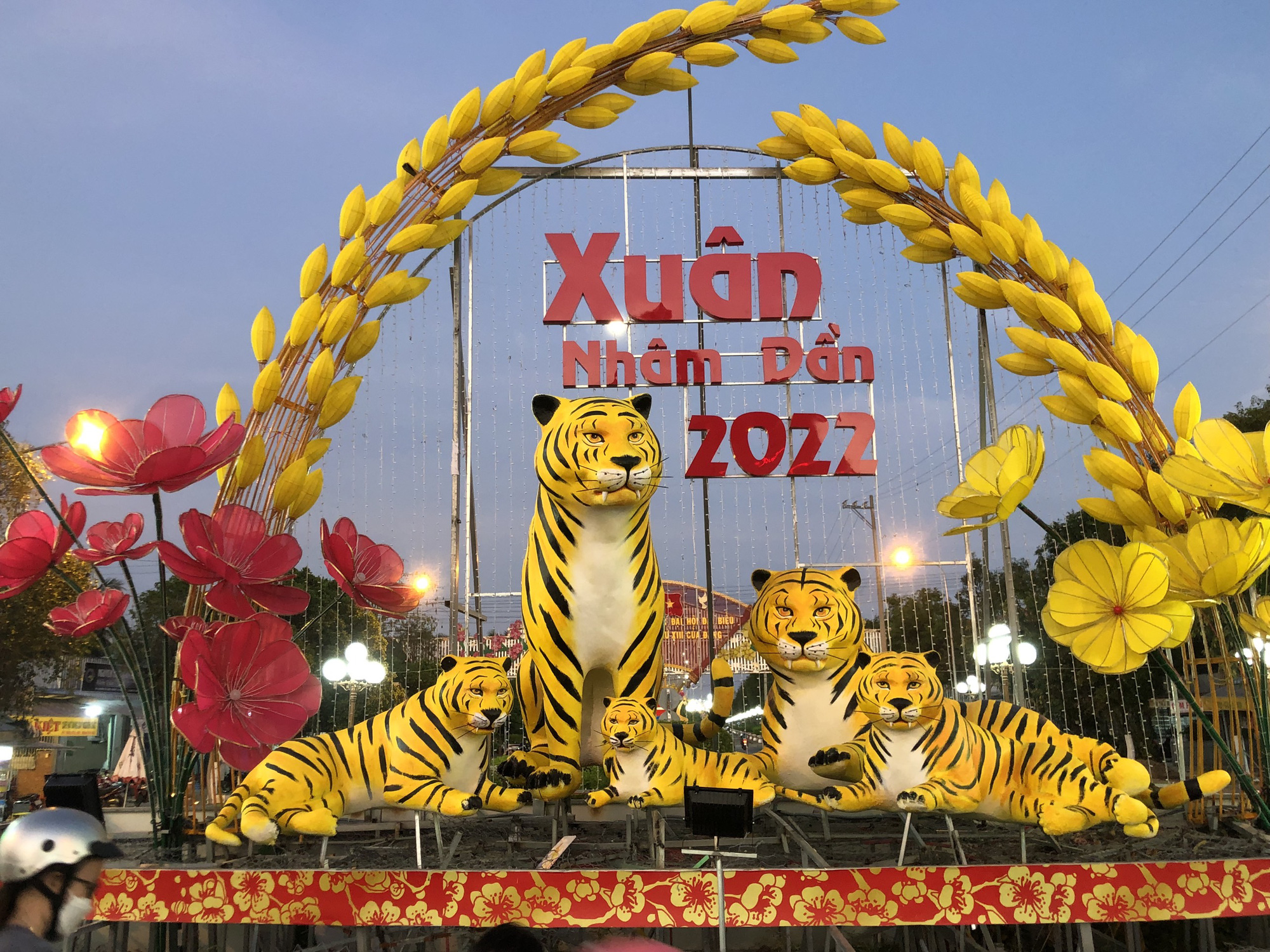Tiger in Vietnamese folk and contemporary notions
The long-lasting image of a tiger, or "king of the forest," is closely associated with human history. It evokes strength, majesty, brilliance, mysterious beauty, and tractability in a striped body, as well as the ferocity of a wild beast, a dangerous predator, and the symbol of a powerful warrior.

In Asian culture, the tiger is a mascot of the 12-animal Chinese zodiac and symbolizes strength.
In Asian culture, the tiger is a mascot of the 12-animal Chinese zodiac and symbolizes strength. In folklore, there are many different names for a tiger. In nature, it is a powerful and agile wild beast with dexterous fighting techniques and hunting skills. This animal is also characterized by ferocity, daring, recklessness, and aggression. It easily rivals many other large, strong animals, with a mighty roar in the wilderness that terrifies all other species. Hence, the tiger is called the "king of the forest," a sacred animal. Although it is a wild animal and rarely tamed, the tiger has a close bond with the daily life and religion of the Vietnamese people. It is not only a symbol of strength, but also signifies the ferocious dominance of a hero.
The tiger image has long been present in Vietnamese culture. Dong Son bronze drums, made 2,500-3,000 years ago, feature a tiger image. This shows that the tiger has been attached to Vietnamese people for generations.
Tiger characteristics are likened to good things like "eat like a tiger", "as stately as a tiger" or "don't touch the whiskers of a tiger". In spiritual life and art culture, the tiger is also worshiped and is a popular and impressive image in the folklife of Vietnamese people in many regions.

The image of the tiger is used to decorate during the Tet holiday.
For a long time in Vietnamese folk beliefs, the tiger was regarded as a sacred animal whose name was deified with titles such as "Sir" or "master."Many families worship the tiger to pray for fame and luck.
At present, the image of the tiger is used to decorate during the Tet holiday. The tiger amulet is hung and stuck on the front gates to ward off evil spirits. Stemming from this belief, artisans create the tiger emblem on many materials, such as wood, stone, terracotta, paintings, and paper-cut paintings. The 5-tiger painting, created by ancient Hang Trong artists in Hanoi, is a famous line of worship painting. According to researchers, the five tigers are powerful subjects in the five directions, and possess dominant power to place everything in order.
Regarding social relations, the five directions signify the community, a great characteristic that makes the tiger the guardian of universality. According to preliminary statistics, Vietnamese people have more than 1,000 proverbs, dialects, idioms, proverbs and folk songs related to the tiger. It is the subject of many fairy tales, fables, myths, and anecdotes. The tiger also inspires many poets to write unique poems, such as "remembering the forest" (by The Lu) about the wild tigers in the zoo. It is also an attractive art item shown on daily-life objects, places of worship, and houses.
Today, the living space of tigers is becoming increasingly narrow and the population is declining due to illegal hunting. Tigers are no longer a threat to humans; on the contrary, they have been brought to extinction by humans on a global scale and are listed in the Red Book.
From a symbol of the sacred and mysterious power of the green forest, the tiger has become a symbol of the call to protect biodiversity and ecological balance.








